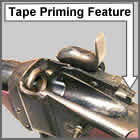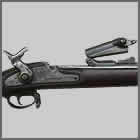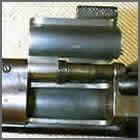- 01: Introduction
- 02: History
- 03: Propellants, Firearms, and Ammunition Development
- 04: Modern Firearms Manufacture
- 05: Small Arms Ammunition
- 06: Evidence Handling Procedures
- 07: Equipment and Instrumentation
- 08: Examination of Firearms
- 09: Cartridge and Shotshell Examination
- 10: Characterization and Evaluation of Fired Projectiles
- 11: Bullet Comparison and Identification
- 12: Gunshot Residue and Distance Determination
- 13: Toolmark Identification
- 14: Communicating Results
- Resources


Transitional Adaptations
Home > Propellants, Firearms, and Ammunition Development > Evolution of Firearms > Breech Loading Firearm Design > Transitional Adaptations
The basic mechanisms were convenient for the percussion shooter and easily adapted to the breech mechanisms found in modern arms. Some percussion breechloaders were cleverly converted to fire modern cartridges with internal ignition. The early locking mechanism was usually robust enough to safely control a modern cartridge. The Sharps rifle is a noteworthy and familiar example. As a breech-loading percussion rifle for military use, it was easily modified to become one of the famous cartridge firearms of the American West.
In addition, the 1863 U.S. Springfield and the British 1853 Pattern Enfield (both .58 caliber rifled muskets) were converted to fire true cartridges by literally cutting off the top half of the breech area. The resulting cavity was filled with a hinged breechblock that was fitted with a long firing pin. The mechanism was locked using a rudimentary spring latch.
| Conversions |
| In this image of a percussion Sharps rifle converted to cartridge (below left), the device under the hammer spur is a leftover feature for tape priming, revealing the percussion heritage of the rifle. |





 Sharps Rifle conversion
Sharps Rifle conversion 1865 Springfield Allin conversion
1865 Springfield Allin conversion Enfield Snider conversion
Enfield Snider conversion